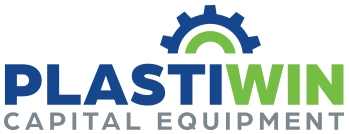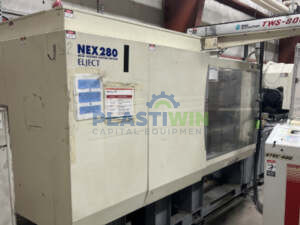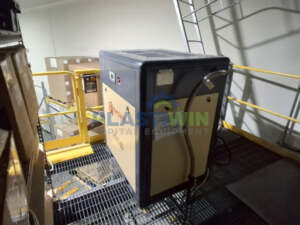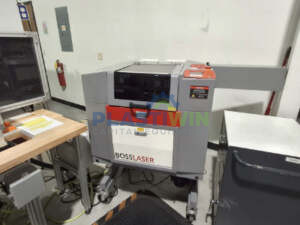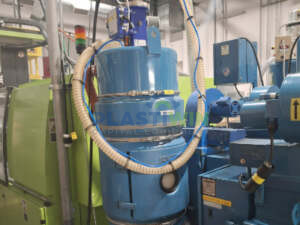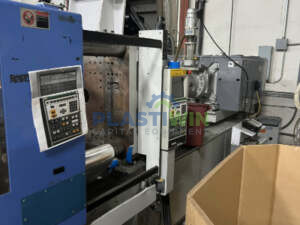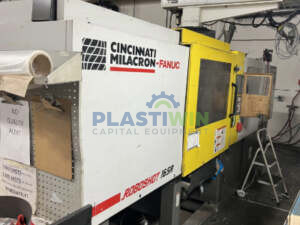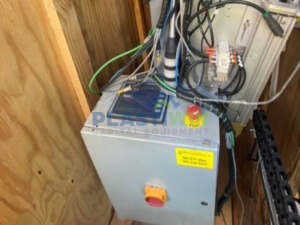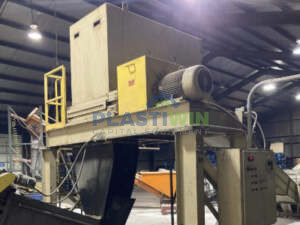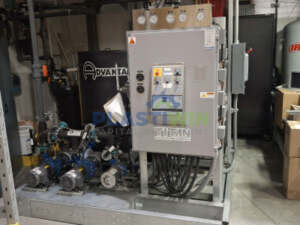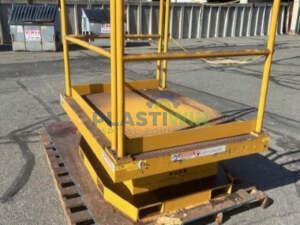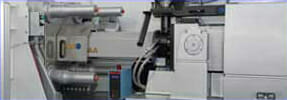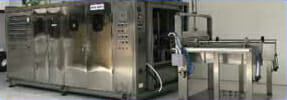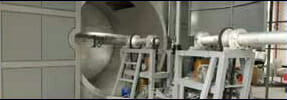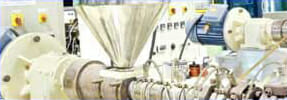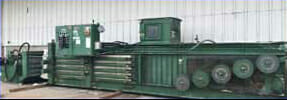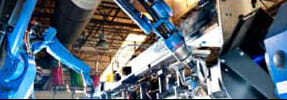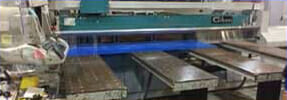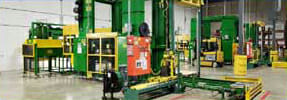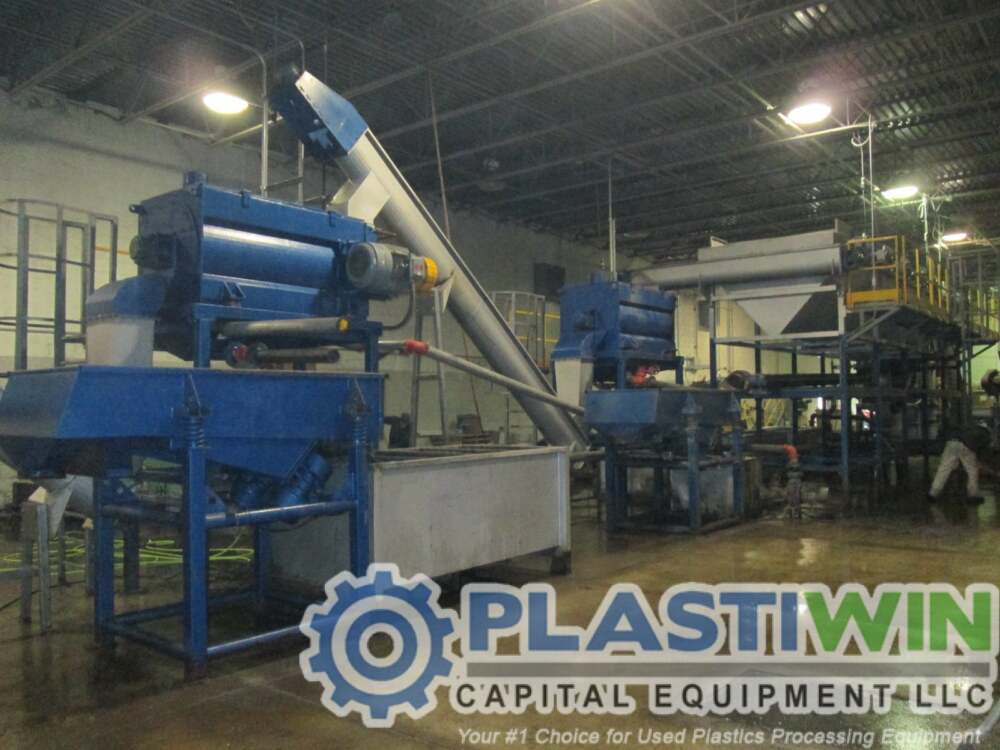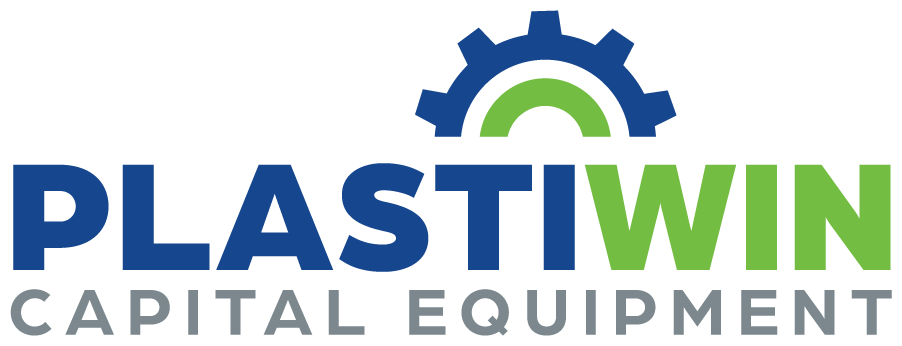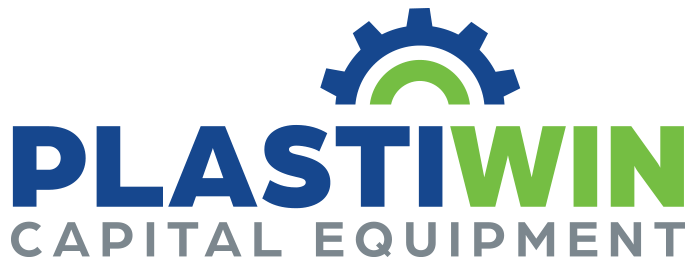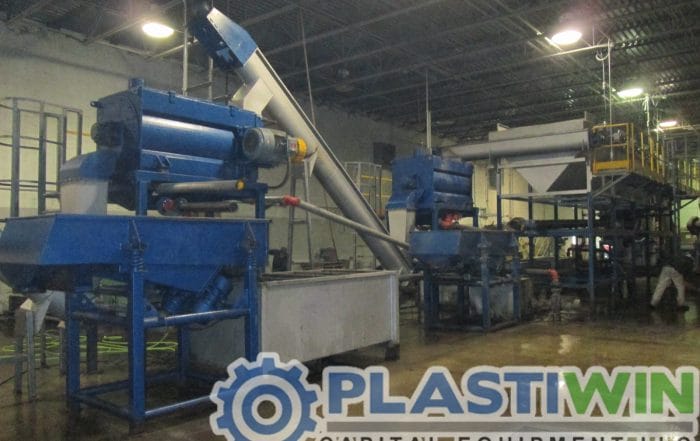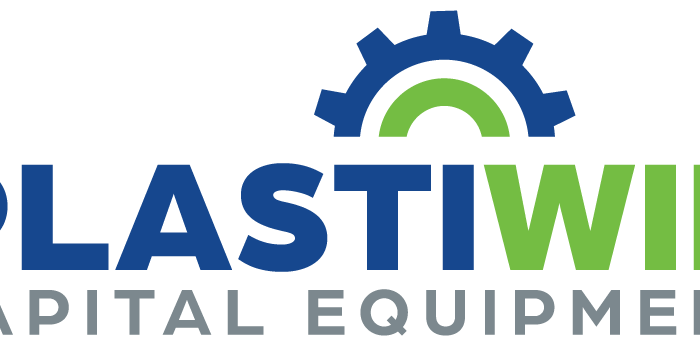
Buy Used Plastic Process Equipment

Buy Used Plastic Process Equipment
Need to Sell Your Plastic Processing Equipment?
Buy, trade, and sell your used processing equipment with us.
Processing Equipment Liquidations
For many businesses, liquidation can be the most practical and strategic path forward—and PlastiWin is here to help navigate that journey. With deep-rooted experience in the plastics, chemical, rubber, and machining industries, we bring a wealth of specialized knowledge to the table. Whether you’re liquidating an entire operation or just one division, our team works closely with you to craft a tailored plan. As expert machinery liquidators, we tap into our extensive network to reach qualified buyers and use strong negotiation tactics to secure the best possible return on your equipment and assets.
At PlastiWin, we have earned our reputation through years of reliable service as experienced machine liquidators. We don’t just craft effective liquidation strategies—we build strong partnerships through clear communication and dedicated support. From start to finish, we prioritize your understanding of the process, making sure you’re informed, involved, and confident every step of the way.
For additional information about our liquidation services, give us a call at (330) 998-6738. With a proven track record and years of industry experience, our team is ready to help. All inquiries are handled with complete confidentiality, so you can reach out with confidence. Let us put our expertise to work for you—contact us today.
As seasoned machinery liquidators, we leverage our network and contacts to connect with potential buyers, employing negotiation skills to facilitate agreements on the most advantageous sale prices for your machinery and assets. Our approach extends beyond developing a robust liquidation strategy; we prioritize client consultation and communication, ensuring a thorough understanding of the entire liquidation process.
For more information about our liquidation services, please reach out to us at (330) 998-6738. We are seasoned liquidators with a track record of success, ready to assist you. Rest assured that all inquiries will be treated with the utmost confidentiality. Contact us today to benefit from our experience and proven results.
We’re driven by a commitment to quality, integrity, and customer satisfaction in every transaction. As a trusted industry partner, we’ve become the go-to source for all your used injection molding machine needs.
Whether you’re buying or selling used plastic processing machinery, PlastiWin delivers unmatched value at every turn. Count on us to guide you through the process smoothly, backed by our steadfast commitment to quality and customer satisfaction.
High-Quality Used Single Screw Extruders at PlastiWin
Understanding Used Single Screw Extruders: At the heart of used single screw extruders lies a simple yet highly effective mechanism. These machines consist of [...]
Top 7 Tips to Increase the Resale Value of Your Used Plastic Processing Equipment
Top 7 tips to increase the resale value of your used plastic processing equipment Whether driven by the need to upgrade technology, downsize operations, or [...]
Working with Brian Swain & PlastiWin Capital Equipment
Brian Swain's PlastiWin With Brian Swain & PlastiWin Capital Equipment, we pride ourselves on providing exceptional service and competitive pricing that aligns with your budgetary [...]
Injection Molding Machines
Injection molding machines play a vital role in manufacturing, producing everything from common household goods to complex medical components. By injecting molten material into mold cavities, this process delivers highly precise, high-quality parts at scale.
Core components of an injection molding machine include the hopper, screw, barrel, nozzle, mold, and clamping unit. The process begins with raw material stored in the hopper, which feeds into the screw. As the screw turns, it pushes the material through the heated barrel, where it melts. The molten plastic is then injected through the nozzle into the mold, which is secured tightly by the clamping unit.
Injection molding machines generally fall into two main categories: hydraulic and electric. Hydraulic models use fluid pressure to power clamping and injection, whereas electric machines use precision-driven electric motors. With their energy efficiency and reduced operating costs, electric machines are increasingly becoming the preferred choice in modern manufacturing.
Precision is critical in injection molding, and machines are engineered to ensure consistent, repeatable results. The process unfolds in four key stages: filling the mold with molten material, packing it to maintain quality, allowing it to cool, and finally ejecting the finished part.
Injection molding machines are available in a range of sizes, chosen based on the mold dimensions and the volume of material required. Larger machines are designed for producing big, bulky parts, while smaller machines are better suited for precision components and smaller-scale production.
Why Buy Used Injection Molding Machines
The demand for used injection molding machines has risen due to increased orders and challenges in obtaining new equipment promptly. Buying used machines offers advantages such as brand familiarity, and reducing training time and costs. The cost of used plastic injection molding machines varies based on factors like condition, warranty, and shipping. Setting a budget is crucial when seeking used equipment.
How Much Do Used Plastic Injection Molding Machines Cost?
The cost of used injection molding machines can vary based on several factors, but PlastiWin’s knowledgeable team is here to help you find the right fit within your budget. Whether you’re buying, selling, or liquidating equipment, we provide a transparent, dependable experience every step of the way.
Brands of Used Injection Molding Equipment
Our inventory changes frequently but we typically carry used plastic injection molding machine manufacturers including:
- Used Arburg Injection Machines
- Used Battenfeld Molding Machines
- Used Cincinnati Milacron Injection Molding Machine
- Used Engel Injection Molding Machines
- Used Husky Injection Molding
- Used Krauss Maffei Plastic Injection Moulding Machine
- Used Mitsubishi Plastic Injection Moulding Machines
- Used Newbury Machines
- Used Negri Bossi
- Used Niigata Machines
- Used Nissei Injection Molding Machines
- Used Sumitomo Machine
- Used Toshiba Machines
- Used Toyo Injection Molding Equipment
- Used UBE Injection Molding Machine
- Used Van Dorn Injection Molding Equipment For Sale
If you’re looking to buy, sell or liquidate used injection molding equipment, contact the PlastiWin sales team at 330-998-6738 or machine@plastiwin.com.
PlastiWin Experts in Used Injection Molding Equipment
PlastiWin’s broad inventory supports both plastic and rubber molding applications, offering top-tier used equipment with clear pricing and complete transparency. As technology progresses, injection molding machines have become even more energy-efficient and cost-effective—making them a compelling choice for manufacturers focused on optimizing their production processes.
Injection molding machines are vital to modern manufacturing, enabling the high-volume production of precision parts with consistent quality. Available in a range of sizes and configurations, their cost depends on factors like application and automation level. Thanks to ongoing technological advancements, these machines are now more energy-efficient and cost-effective, making them an appealing solution for manufacturers aiming to streamline and enhance their operations.
Plastic Extrusion Equipment
Plastic extrusion equipment plays a crucial role in manufacturing, producing a wide variety of plastic products in different shapes and sizes. From pipes and tubes to packaging materials and automotive components, this equipment is essential for creating consistent, high-quality outputs across numerous industries.
Plastic extrusion equipment comes in various types and configurations, each tailored to specific applications. Common varieties include single-screw extruders, twin-screw extruders, co-extrusion machines, sheet extrusion lines, film extrusion lines, pelletizing lines, specialty extrusion lines, and pipe and profile extrusion lines. Additionally, downstream equipment is used for processes like sheet, film, pipe and profile extrusion, pelletizing, and specialty applications.
Single-screw extruders, the most prevalent type, are employed for producing products requiring a single layer. These machines are available in various sizes and configurations, offering simplicity in design.
Extrusion lines include a full range of equipment designed to manage plastic processing from start to finish. Supporting this process is a variety of ancillary equipment, such as blenders and mixers, dryers, conveyors, vacuum and cooling tanks, dies, pullers, cutters, spray tanks, water baths, chillers, and more—each playing a vital role in ensuring a smooth, efficient, and high-quality production flow.
The cost of plastic extrusion equipment can vary widely based on the type and configuration. Smaller units may start at a few thousand dollars, while larger, more advanced systems can reach into the hundreds of thousands. Key factors affecting pricing include the equipment’s manufacturer, the technology it uses, and the degree of automation integrated into the system.
What Is Plastic Extrusion
Plastic extrusion is a core manufacturing process that involves melting plastic material in an extruder and pushing it through a die to form a continuous profile in the desired shape. At the heart of this process is the extruder itself—featuring a screw and barrel assembly—which handles both the melting and movement of the plastic material through the system.
Plastic extrusion equipment consists of several key components, each serving a specific function in the process. The feeding system introduces raw plastic material into the extruder, while the die shapes the molten plastic into the desired profile. Once formed, the cooling system reduces the material’s temperature to solidify the shape, and the take-off system steadily pulls the finished profile away from the die for further processing.
The extrusion process is highly versatile, capable of producing plastic products in a wide range of sizes and shapes—depending on the die design. Outputs can vary from thin-walled tubing to robust, thick-walled profiles used in construction and other specialized applications.
Plastic extrusion equipment is an essential asset in manufacturing, enabling the efficient production of a wide range of plastic products. The process involves melting plastic within an extruder and shaping it through a die to create continuous profiles. With various types and configurations available, equipment costs depend on application needs and automation levels. As technology progresses, extrusion systems are becoming more energy-efficient and cost-effective—making them an increasingly valuable choice for manufacturers aiming to optimize their operations.
PlastiWin: The Experts in Used Plastic Extrusion Equipment
 PlastiWin proudly offers a wide selection of extruders and extrusion line equipment, sourced from trusted manufacturers. Backed by a team of specialists focused on used extruders, we’re here to help you find the right machine for your needs—at a price that fits your budget. We prioritize quality, transparency, and customer satisfaction in every transaction.
PlastiWin proudly offers a wide selection of extruders and extrusion line equipment, sourced from trusted manufacturers. Backed by a team of specialists focused on used extruders, we’re here to help you find the right machine for your needs—at a price that fits your budget. We prioritize quality, transparency, and customer satisfaction in every transaction.
While our inventory is constantly evolving, you’ll consistently find equipment from well-known brands. With our ongoing commitment to excellence, PlastiWin remains a dependable partner for all your plastic extrusion equipment needs.
Shop Used Extrusion Machine Brands
- American Kuhne
- Automatik Reiter
- Battenfeld
- Berstorff Extruder
- Conair
- Coperion Extruder
- Davis Standard
- Diamond America
- Entek Extruders
- HPM
- Krauss Maffei
- LabTech Engineering
- Leistritz
- Milacron Extruder
- Mixaco
- Nanjing
- NRM
- Papenmeier
- Scheer Bay
- Sterling
- Welex
- Werner & Pfleiderer
- XALOY
- Xinda
Plastic extrusion is a manufacturing process that melts raw plastic and shapes it into continuous profiles. Common products made through extrusion include piping and tubing, weatherstripping, fencing, deck railings, window frames, plastic films and sheets, and thermoplastic coatings. Typically carried out using a plastic extruder, this high-volume method is ideal for quickly producing large quantities of consistent, high-quality products.
If you’re in search of an extruder machine for a plastic extrusion project, PlastiWin offers a diverse selection of used extrusion machines for sale, suitable for various polymers such as PVC and ABS. The availability of different machines allows for the creation of high-quality parts.
PlastiWin offers a robust inventory of extruders and extrusion lines from trusted, industry-leading brands—catering to a wide range of applications. Popular names in our selection include American Leistritz (single and twin-screw extruders), Entek, Werner & Pfleiderer, Coperion, Milacron, and Berstorff. With these reliable options, PlastiWin helps you find the right equipment to meet your production needs.
Whether you’re interested in buying, selling, or liquidating used extruders or extrusion line machinery, contact PlastiWin at 330-998-6738 or machine@plastiwin.com
Rotational Molding Machines
Rotational molding machines are essential in the manufacturing industry, capable of producing plastic products in a wide variety of shapes and sizes. Known for their versatility, these machines are used to create everything from large tanks and containers to smaller items like toys and playground equipment.
A rotational molding machine consists of four primary components: the oven, mold, cooling system, and rotation system. The oven melts the plastic material, which is then shaped within the mold. After molding, the cooling system solidifies the plastic, while the rotation system—moving the mold along multiple axes—ensures even distribution and uniform wall thickness throughout the product.
Rotational molding machines are available in various types and configurations; each designed for specific applications. Common types include carousel, rock and roll, and shuttle machines. Carousel machines—the most widely used—rotate molds in a circular motion and are ideal for producing smaller items like toys. Rock and roll machines use a back-and-forth motion, making them well-suited for larger products such as tanks and containers. Shuttle machines feature two stations for convenient mold changes, offering flexibility for manufacturing larger parts with greater efficiency.
Carousel machines are the most commonly used type of rotational molding equipment. They operate through three main stages: a heating station, a cooling station, and an unloading station. Designed to rotate molds in a circular motion around a central axis, these machines can produce multiple products at once—making them highly efficient. They’re especially popular for manufacturing small toys and a variety of other plastic items.
Rock and roll machines are ideal for producing larger plastic products, such as tanks and containers. These machines rotate the mold in a rocking motion, which helps ensure even distribution of the plastic material across all surfaces—resulting in consistent wall thickness and structural integrity in larger items.
Shuttle machines feature a main oven with two stations and are equipped with either straight or offset arms. Known for their ease of mold changing, these machines are ideal for handling large-scale production. With their spacious design and robust capabilities, shuttle machines are well-suited for manufacturing sizable plastic products.
The cost of rotational molding machines can vary widely depending on factors like type, configuration, size, manufacturer, technology, and the degree of automation. Smaller units may start at a few thousand dollars, while larger, more advanced systems can reach into the hundreds of thousands—reflecting their capabilities and production scale.
PlastiWin offers a wide selection of used rotational molding machines for plastic and rubber component production. With a team of specialists in rotomolding equipment, we help match you with the right machinery for your specific application—backed by competitive pricing and full transparency throughout the buying process.
What Is Rotational Molding
Rotational molding is a key manufacturing process that involves heating plastic material inside a mold that rotates along multiple axes. This rotation evenly distributes the material, creating hollow products with smooth, seamless finishes. Molds are typically made from aluminum or steel and can be crafted to produce items in a wide range of sizes and shapes.
In summary, rotational molding machines are indispensable tools in the manufacturing sector, enabling the production of a diverse range of plastic products. The process involves heating plastic material within a rotating mold, ultimately yielding hollow products with seamless finishes. These machines are available in various types and configurations, with costs varying based on factors such as the specific application and the level of automation integrated. As technology advances, rotational molding machines continue to evolve, becoming more energy-efficient and cost-effective, making them an increasingly attractive option for manufacturers seeking to enhance their production processes.
Brands | Used Rotomolding Machines
Although our inventory changes frequently, we often carry used rotational molding machines from the following manufacturers:
Looking to buy, sell or liquidate used rotational molding machines? Contact the PlastiWin sales team at 330-998-6738 or machine@plastiwin.com.
Thermoforming Machine
Thermoforming machines play a vital role in manufacturing and include key components such as the heating system, mold, cooling system, and trimming system. The heating system softens the plastic material, which is then shaped by the mold. After forming, the cooling system solidifies the product, and the trimming system removes any excess material to complete the finished piece.
Thermoforming machines are available in various types and configurations to meet specific application needs. The most common types include vacuum forming machines, pressure forming machines, and twin-sheet forming machines—each offering unique advantages based on the product requirements and production scale.
Vacuum Forming Machines: The most commonly used type of thermoforming equipment, vacuum forming machines create products with detail or texture on one side. They feature a straightforward design and are available in various sizes to suit different production needs.
Pressure Forming Machines: Ideal for producing high-detail, high-definition products, these machines utilize both vacuum and pressure to achieve sharp textures and precise shapes—making them suitable for more intricate applications.
Twin-Sheet Forming Machines: Ideal for producing hollow products like large containers and tanks, they use two separate sheets fused together. Additionally, CNC routers are commonly used in thermoforming to cut or trim excess plastic from thermoformed sheets, enhancing the final product’s appearance.
Inline roll feed thermoforming machines use a continuous roll or sheet of plastic, constantly fed through the thermoformer. Once molded, excess material is trimmed and often recycled for future use. Inline systems are commonly used to produce thin-walled items such as cups, lids, and internal packaging components.
The cost of thermoforming machines depends on several factors, including the type, configuration, size, manufacturer, technology, and level of automation. Entry-level or smaller machines may start at a few thousand dollars, while larger, high-performance systems with advanced features can reach into the hundreds of thousands.
What Is Thermoforming or Vacuum Forming
Thermoforming is a vital manufacturing process that involves heating a plastic sheet to its softening point and then shaping it using vacuum or pressure. This method allows for the creation of products with complex shapes and fine details. Unlike injection molding, thermoforming uses pre-formed plastic sheets rather than melting pellets, offering greater flexibility for certain applications.
Once the material is formed, it’s cooled and trimmed to create a finished product. This versatile process is widely used to manufacture a variety of plastic goods—from packaging to automotive parts.
Thermoforming machines come in a range of types and configurations, with costs varying based on size, features, and automation levels. Thanks to ongoing advancements, modern thermoforming machines are becoming more energy-efficient and cost-effective, making them an increasingly valuable solution for manufacturers aiming to streamline production and reduce costs.
Brands of Used Thermoformers
Our inventory changes often but we usually carry thermoformers from the following manufacturers:
If you’re looking to buy, sell or liquidate used thermoforming machines, contact the PlastiWin sales team at 330-998-6738 or machine@plastiwin.com
With 35 years of experience, PlastiWin is globally recognized for buying and selling used plastics process equipment. Our specialized services include the liquidation of used plastics processing equipment lines, purchasing plastic process manufacturing facilities, and providing appraisals for various processing equipment.
We are a premier source for used injection molding equipment, extrusion machinery, recycling systems, and size reduction machinery. The extensive inventory covers various equipment categories, from molding machines to material handling.
We ensure customer satisfaction at every step, whether buying or selling equipment. The company collaborates with numerous manufacturers globally, making it a leading resource for diverse used plastic processing machine requirements.
The mission at PlastiWin is to help customers optimize efficiency while securing the best deals possible. The team of experts in used plastic machinery brings valuable experience to assist in sourcing the right equipment for plastic processing needs. The inventory includes used injection molding machines from renowned brands such as Engel, Toshiba, Arburg, Nissei, Sumitomo, Toyo, Husky, JSW, and more.
New to our use plastic equipment is a LabTech Tube Extruder. This complete plastic medical tube extrusion line is ideal to process Silicone, PVC, EVA, and TPU.
